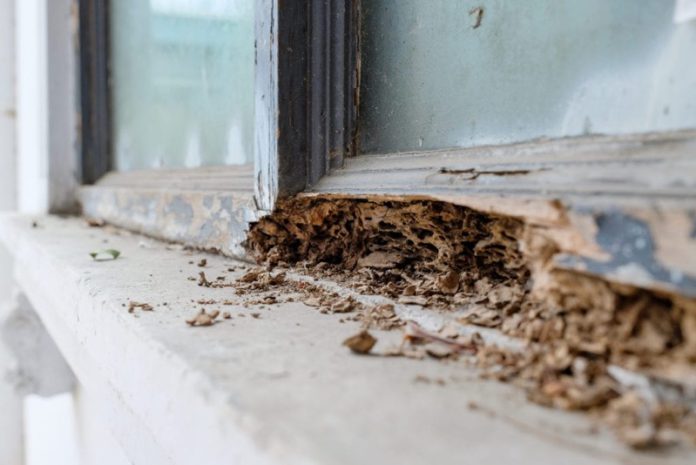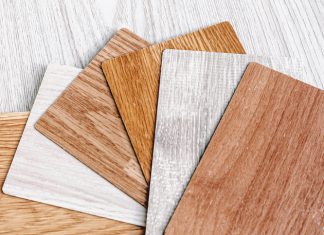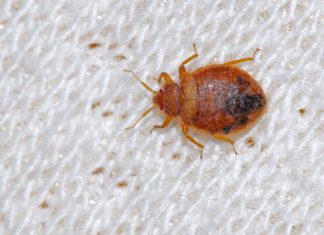You might be amazed to know that approximately $5 billion in property damage is caused each year by termites, which are wood-destroying insects. As it turns out, the termites are out in full force at a particular time of year. Pest control firms around the country begin their season in March. Termite Awareness Week is really from March 7th to the 13th because the pest control firms are knowledgeable of Florida termites and their swarming behavior.
Do you know what to do if termites begin to swarm around you? They swarm when the original colony has reached its maximum population and is growing as a result of new births. At different seasons of the year, they form swarms. The sooner you deal with it, the better off you’ll be.
When it comes to termites, it’s crucial to know why they swarm, behaviors of male and female swarmers, termites in humid regions, and the signs of termite swarming.
Termite Swarms: What You Need to Know
With all the money you spend on your home and its maintenance, you want it to last for many years. In contrast, termites are wood-destroying creatures that may quickly take over a house and ruin its structure. A wide range of building materials, including studs, trusses, baseboards, and wood floors! Termite swarms need to be dealt with as soon as possible.
Termites swarm because they are attracted to each other.
A termite swarm occurs when the original colony reaches its limit and is ready to proliferate further. This can happen once a year for many of these colonies. Swarmers can number in the tens of thousands. Swarmers are also known as alates, just in case, you’d like to utilize that in a discussion to appear more knowledgeable than you actually are.
Until the correct circumstances are met, these hardworking termites remain in the soil near the surface of their nest. The swarmers fly out to find a mate when the conditions are just right.
Swarming Season for Termites
As ants and termites are frequently confused, this is an essential subject. Knowing when to be on the lookout for termites is therefore beneficial. There are around twenty species of termites in Florida. However, the most common swarmers are:
- Sociable termites, which live in underground colonies, are known as subterranean termites and are based on the caste system. The termites are divided into three groups: the reproductive, the worker, and the military groups. During the spring and daytime hours, they cluster around their burrows in the ground or near water. To keep themselves safe from predators, they build mud huts.
- Drywood termites swarm later in the year, typically in late summer or early fall, infesting dry wood.
- For damp wood termites to thrive, they need a lot of moisture and a lot of humidity. From January through October, they’re everywhere.
Swarms of Both Male And Female Termites
Every year, depending on the size of the colony, swarmers produce a variable number of fecund individuals, both male and female. Repeatedly, other termite colonies in the neighborhood exhibit the same behavior. Each colony might have hundreds or even thousands of swarmers!
Upon securing a spouse, newlywed birds lose their feathers, mate, and begin the process of establishing a new nest. For the most part, the greatest swarms are released on the first day, and lesser ones are released on the following days.
Humidity and Termite Swarms
As a general rule, all termite swarms wait until the sky is cloudy and the wind is less than 6mph. Wet soil makes it easier to build their homes, and they prefer a more humid environment to grow.
It’s possible that a few swarmers got in through an open window or door, so don’t freak out. They have been known to land indoors due to a miscalculation of their landing site.
Prevent Termite Infestation
If you see swarms of termites near your home, you may have a problem. Consequently, it is imperative that you do as follows:
The first step is to check your house and property for any active termite colonies and indicators.
It’s important to keep an eye out for any situations that may let termites get into your house. Such as any vegetation that touches your property, water that stands, or any other landscaping difficulties that you may have.
Keep termites away from your house by having it inspected and treated on a regular basis. Install downspouts if you don’t have them already to direct water away from home.
Make sure you don’t have any negative grading in your yard and that your gutters are clean. Drainage is crucial. Termites are attracted to firewood, so keep it out of the house.
Indicators of Termites
Wooden surfaces, such as the exterior of a carport can be tapped for hollowness. There may be termites in your home if it sounds hollow
Protective tunnels the termites use to move back and forth are called mud tubes. After a termite swarm, the swarm’s wings will be scattered all over the ground.
A specialist is needed if you discover termite-damaged wood in your home. As a result of this, termites are able to expand their nests by feeding on the wood. Cellulose-rich dietary sources include wood, grass, and leaves. Your home’s structural integrity may be at risk because termites prefer to devour this type of food.
Conclusion!
If a home is infested with termites, it’s critical to address the problem immediately. The presence of a termite swarm indicates that a colony is expanding and should be eradicated. A termite swarm warrants the attention of a pest control expert. Even if they just last a few days, inspectors need to examine what is going on during these brief periods. Termites and other wood-destroying organisms can be found in the home.













